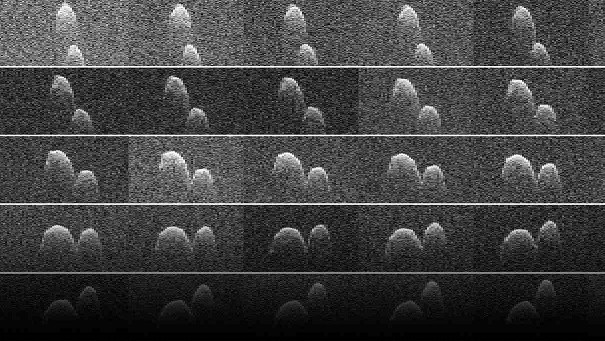The closest asteroid ever to zip by Earth apparently occurred on July 25, 2015 where the asteroid 1999 JD6 made its nearest pass on our planet, making it the first asteroid in more than 100 years the closest one to brush against Earth.
The asteroid is located some 4.5 million miles away or 19 times the distance between Earth and the moon and is travelling at a velocity of 45,410 miles per hour.
This asteroid also measures 1.2 miles across where NASA detected it using radio telescopes, obtaining its measurements from size, shape and rotation.
These observations also reveal that 1999 JD6 is apparently a "contact binary" which means that this peanut shaped world was formed from two smaller object that merged together via shared gravitational forces.
According to Lance Benner from NASA's Jet Propulsion Laboratory in California, the radar images show that near Earth asteroids usually measure 15 percent larger than 600 feet that also includes 1999 JD6 which possesses a lobed, peanut shape.
These radar signals were directed towards 1999 JD6 and bounced off from NASA's 70-meter DSS-14 antenna located in Goldstone Complex in the Mojave dessert where the data was received by the NRAO Green Bank Telescope in West Virginia to enable finer resolution images of near Earth asteroids or objects.
This radar data was utilized to make this video of asteroid 1999 JD6 where it makes a complete, single rotation over a period of seven and a half hours. The asteroid 1999 JD6 was discovered by the Lowell Observatory in Arizona on May 12, 1999 that completes an orbit of 302.8 days around the sun.
Radar imaging technology still cannot provide the same data as visual observations using light since many asteroids are dark on the surface. However, this data is still crucial for determining how big the asteroid is including its shape and rotation and its orbit trajectories in the future.
The next closest encounter of Earth and 1999 JD6 will occur in July 25, 2054.



























